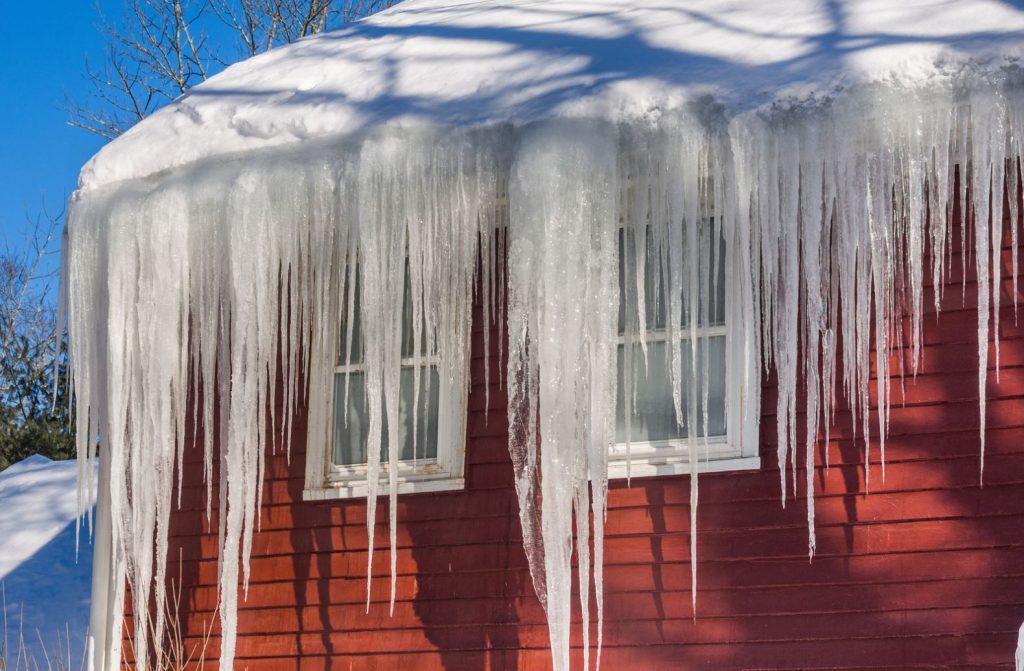Taking proactive winter roof maintenance measures helps homeowners sidestep costly utility bills and unnecessary spring repairs. That’s largely because roof problems in winter result in leaks, structural support damage, and major repairs. To avoid these costly repairs and damage to your roof, here are 5 tips on how to winterize your roof and protect your home during the winter months.
1. Thoroughly and Routinely Clean Your Gutters
It’s not uncommon for homeowners to think about gutter cleaning as strictly a late-autumn task. Falling leaves land on rooftops and wind up in gutters. It makes perfect sense to clear leaves out of gutters during the same weekend they are raked off lawns. Unfortunately, gutters accumulate debris year-round that includes soot, dust, pollen, and other airborne sediments. That’s why gutters require seasonal attention.
2. Cut Back Overhanging Tree Limbs
Tree limbs create issues during the hot summer months that result in roof problems during the winter. Sap drips on roof surfaces and other materials stick to it. This leads to sediment accumulations that later freeze and split shingles apart. By trimming back limbs before they extend over your roofing system, you’ll improve its longevity and reduce repair expenses.
3. Have Your Attic Insulation Inspected
For a roofing system to provide maximum insulation benefits, the underlying attic insulation must meet building code standards. It also must be replaced before it falls into decline. A poorly insulated roof results in upwards of $2,000 in energy losses annually. Gaps allow warmth to escape over the winter and cool air losses during the summer. Having your attic insulation inspected can help reduce costly repairs in the future and help keep energy costs low during the winter months.
4. Inspect Roof Flashing and Caulking
It’s important to understand that winter roof maintenance actually begins during the summer and early fall. That’s when warm, dry weather tests the resiliency of sealants around ventilation pipes and flashing. Heat, high winds, and hailstone strikes chip sealants and leave flashing misaligned. The seemingly small cracks left behind allow water to penetrate the roof deck and cause widespread damage. It’s crucial to schedule a roof inspection following a severe weather event and before the temperature drops below freezing.
5. Look for Telltale Signs of a Leaking Roof
Watermarks on ceilings are an obvious sign of a leaking roof. But there are other subtle indicators that everyday people may not necessarily associate with damage to their roofing system or gutters. These include moisture around windows and doors, unusual humidity or odors in the attic, cracked shingles, and discoloration under soffits, among others. If your home has any of these telltale signs, you are likely to experience significant roof problems in winter.
Contact Davidoff Roofing for Proactive Winter Roof Maintenance
Homeowners can avoid spending money unnecessarily on repairs and replacement by scheduling a roof inspection before winter arrives. By making adjustments and implementing minor repairs now, you can prevent a crisis during the worst possible time. Our professional roofing contractors can inspect your home’s roof and identify any issues or concerns before they become costly. Reach out to us today to prepare your roof for winter.
